Context
Recently, the World Wildlife Crime Report 2024 was launched by the United Nations Office on Drugs and Crime (UNODC) in Vienna, Austria.
About United Nations Office on Drugs and Crime (UNODC)
- It is a global leader in the fight against illicit drugs and international crime.
- It was established in 1997 through a merger between the United Nations Drug Control Programme and the Centre for International Crime Prevention.
- UNODC is mandated to assist Member States in their struggle against illicit drugs, crime and terrorism.
|
About the World Wildlife Crime Report 2024
- It is the third report in a series following the 2020 and 2016 publications.
- Deals With: It provides an updated focus on trends in the illegal trade in wildlife species listed in the Convention on International Trade in Endangered Species of Wild Fauna and Flora (CITES).
- Considered Data: The seizure data in the report documents illegal trade in 162 countries and territories during 2015–2021, which impacted around 4,000 plant and animal species—3,250 of which are listed in the CITES Appendices.
- Take Reference From: The data in the report is largely derived from the available national annual illegal trade reports, which CITES Parties are required to submit each year.
- New Emphasis: In this edition, new emphasis is placed on the assessment of the causes and impacts of wildlife trafficking and associated crime at a global level.
Enroll now for UPSC Online Course
Crucial Insights on the World Wildlife Crime Report 2024
- Persistence of Wildlife Trafficking: Wildlife trafficking persists worldwide despite two decades of concerted action at international and national levels.
- The report reinforced that the factors driving trafficking from source to end markets vary enormously between different illicit wildlife commodity sectors.
- Wildlife In Seizure: Elephants, crocodilian species, corals, carnivores, snakes, turtles, rosewood, pangolins, turtles and tortoises and bivalve molluscs were figured most commonly in seizures made of wildlife and their body parts.
- Market Demand: Rhinos, pangolins and elephants were the top three traded wildlife species. In plants, cedars, rosewoods and agarwood were high in demand.
- Rarity of Species: In cases of certain plants and animals, like orchids, for instance, the rarity of species is a driving force behind the trade.
- India is witnessing a shift in illegal trade as the demand for live animals, especially exotic ones as pets, is on the rise.
- Role of Corruption & Technology: Corruption undermines regulation and enforcement while technology accelerates the capacity of traffickers to reach global markets.
- There is rising involvement of educated people on both, demand and supply sides, citing the use of the internet to carry out such trade.
- Impacts Observed: In many cases, illegal trade appeared to have contributed to local or global extinctions of species, disrupted ecosystems, and undermined the many socioeconomic benefits that people derive from nature.
- The UN Report: It noted that among the harms of illegal wildlife trade are issues such as biodiversity degradation, the threat of extinction and the threat of invasive species taking over local habitats.
About Wildlife Trade and Wildlife Crime
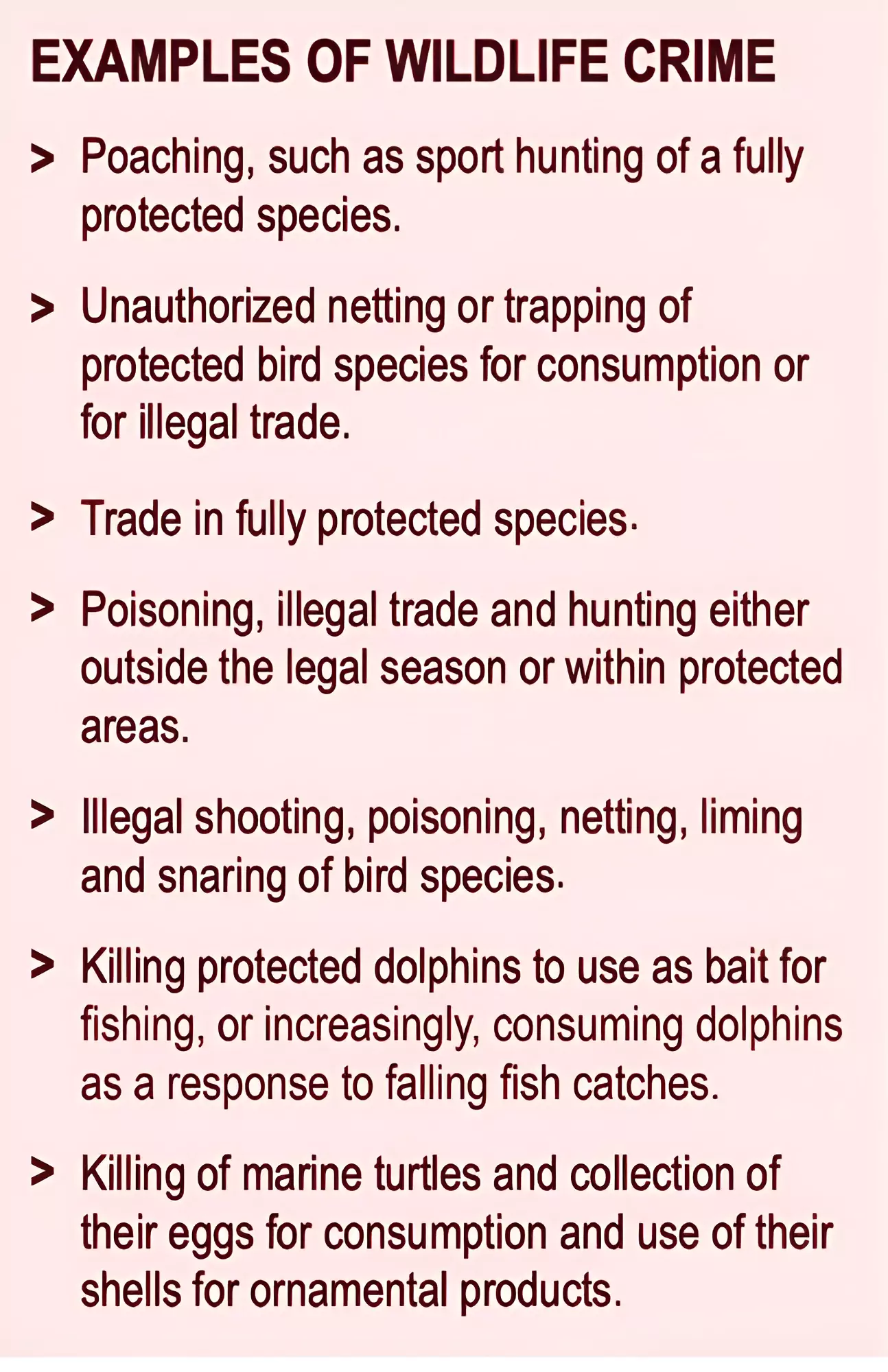
- Wildlife Trade: It Involves the sale and exchange of wild animals and plants, including live specimens, parts, derivatives, or transformed products.
- Occurrence: At various levels, from local to global
- Regulation: Regulated internationally by CITES
- Wildlife Trade in India: India is one of the top 20 countries for wildlife trafficking and one of the top 10 for wildlife trafficking by air. International wildlife trafficking into and out of India mainly occurs through either the Northeast or through airports.
- Chennai and Mumbai airports are major hubs for this illegal activity.
- Major Trafficking Routes: India too has seen a spate of wildlife seizures at airports, seaports and land borders, especially in states such as Mizoram and Manipur.
- As per the Smuggling in India Report 2022-23, the Department of Revenue Intelligence seized 1,652 mammals, birds, reptiles and amphibian species in 2022-23. About 40% of the seizures were classified as threatened or near threatened species.
- Wildlife Crime: A significant environmental crime encompassing violations of national, regional, or international laws protecting wildlife species.
Constitutional Provisions for Wildlife in India:
- Transfer of Authority: The 42nd Amendment Act of 1976 transferred the subject of “Forests and Protection of Wild Animals and Birds” from the State List to the Concurrent List.
- Fundamental Duty: Article 51 A (g) of the Constitution makes it a fundamental duty of every citizen to protect and enhance the natural environment, including forests and wildlife.
- Directive Principles: Article 48 A of the constitution says that “the state shall endeavor to protect and improve the environment and to safeguard the forests and wildlife of the country.
|
Status of Wildlife & Associated Crime:
India is a bio-diverse country, with nearly 6.5% of the world’s known wildlife species. Approximately, 7.6% of the world’s mammals and 12.6% of the world’s birds are found in India.
-
- The illicit demand, globally, for wildlife and its products has seen the rise of wildlife crime across the subcontinent.
- Decline in the World Wildlife: According to WWF’s “Living Planet Report, 2020,” monitored population sizes of various species have declined by an average of 68% between 1970 and 2016.
- A United Nations-backed panel, Intergovernmental Science-Policy Platform on Biodiversity and Ecosystem Services (IPBES), reported in 2019 that up to one million plant and animal species face extinction, with many at risk within decades.
- IUCN’s Red List of Threatened Species indicates that over 41,000 species, or 28% of all assessed species, are threatened with extinction.
Provision to Check Wildlife Crime:
- Global Cooperation in Combating Wildlife Crime:
- International Consortium on Combating Wildlife Crime (ICCWC)
- ASEAN Wildlife Enforcement Network (ASEAN-WEN)
- South Asia Wildlife Enforcement Network (SAWEN)
- UN Convention Against Transnational Organized Crime (UNTOC), 2000
- TRAFFIC (Trade Records Analysis of Flora and Fauna in Commerce)
- The World Wildlife Fund
- Environmental Investigation Agency
- International Fund For Animal Welfare
- Legal Framework in India:
- Wildlife (Protection) Act, 1972: India has a robust legal and policy framework to regulate and restrict wildlife trade.
- CITES Membership: India has been a member of CITES since 1976.
- The Wildlife Crime Control Bureau (WCCB): It is a statutory multi-disciplinary body under the Ministry of Environment and Forests, to combat organized wildlife crime in the country.
- Conservation Projects in India:
- Project Elephant addresses human-elephant conflict and protects elephant habitats.
- Project Tiger conserves endangered tigers and their habitats.
Enroll now for UPSC Online Classes
Driving Factors for Wildlife Crime
- Bribery and Corruption: Corruption is a major driver in terrestrial wildlife crimes, fisheries, and timber. It facilitates illegal activities at every step of the supply chain, including poaching, transportation, processing, and product sales.
- Money Laundering:
- Attractiveness to Organized Crime: Wildlife crime is lucrative, attracting organized crime groups due to the potential for large profits with relatively low risk.
- Laundering of Illicit Financial Flows: High prices for wildlife products like rhino horn and ivory suggest substantial illicit financial flows that may be laundered to conceal their illegal origins.
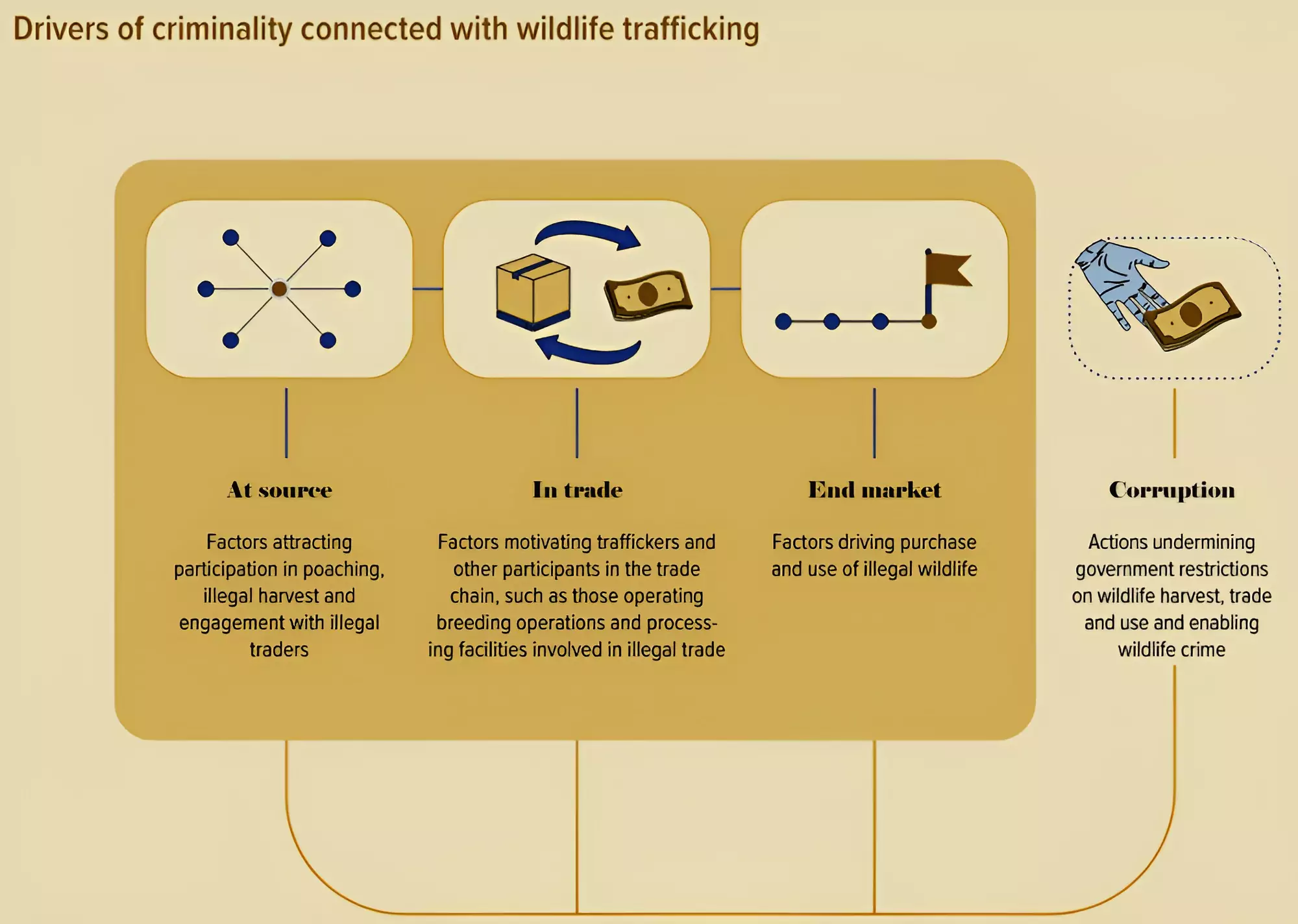 Limited Financial Investigations: Many countries do not conduct financial investigations to identify the proceeds of crime or potential money laundering offenses linked to wildlife crime.
Limited Financial Investigations: Many countries do not conduct financial investigations to identify the proceeds of crime or potential money laundering offenses linked to wildlife crime.
- Examples: The United States is one of the few countries that conducts financial investigations.
- Difference in Legislative Framework: One of the main problems that investigators face worldwide is the difference in the legal status of wild animals in various countries.
- When the trade of an animal, protected in one country, is not restricted under CITES, then it can be sold as a ‘captive-breed’ to avoid any legal wrangles that could arise.
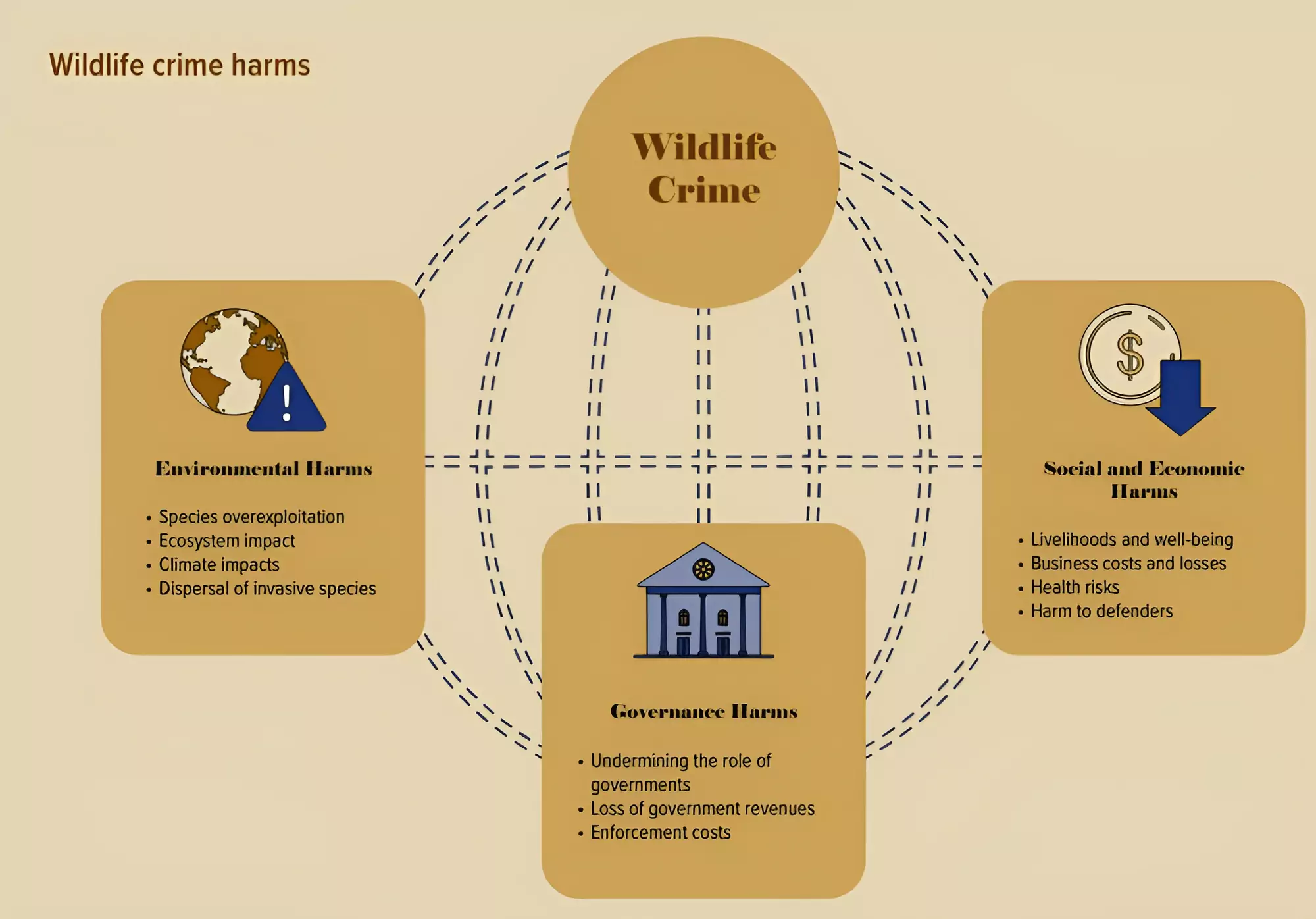 Factors Driving Wildlife Trafficking in India: Key among the drivers behind wildlife and plant trafficking were reasons such as food, medicine, animal collection, pet trade and making fashion products and adornments out of body parts.
Factors Driving Wildlife Trafficking in India: Key among the drivers behind wildlife and plant trafficking were reasons such as food, medicine, animal collection, pet trade and making fashion products and adornments out of body parts. -
- The World Wildlife Crime Report, 2024 noted that each category of demand comprises its own set of trade dynamics.
- Example: The factors that affect demand for python skins for fashion trends are different from those that affect demand for its meat or pet trade.
Impact of Wildlife Trade on the Environment
- Depletion of Natural Inhabitants: Wildlife trade leads to the depletion of natural habitats and populations of native species.
-
- Example: In April 2010, the last known Vietnamese Javan rhinoceros. The animal—the final member of the subspecies Rhinoceros sondaicus annamiticus—was killed by poachers.
- Spread of Invasive Species: Introduction of invasive species into ecosystems, such as red-eared slider turtles and suckermouth sailfin catfish, due to the pet trade.
- Emergence of Zoonotic Diseases: Close human-wildlife contact in wet markets and wildlife trade can lead to the emergence of zoonotic diseases such as Ebola, Marburg virus disease, SARS, and COVID-19.
About Organized Crime:
- Refers: Actions carried out jointly or severally by members, with the intent of obtaining pecuniary or other advantages.
- Types: Organized gang criminality, Racketeering, Syndicate Crime, Drug trafficking, Cybercrime, Human trafficking, Money laundering, Violence, People smuggling, Extortion, Counterfeiting.
- Legal Position: India does not have a specific law to deal with organized crime at the national level.
|
Way Forward
- Take Actions on Recommendations the World Wildlife Crime Report, 2024: It stresses the importance of using solutions which can be tailored and the potential for ongoing wildlife crime research to assist these efforts by gaining insights into criminal structures, financial incentives and evolving demand patterns of trafficking chains.
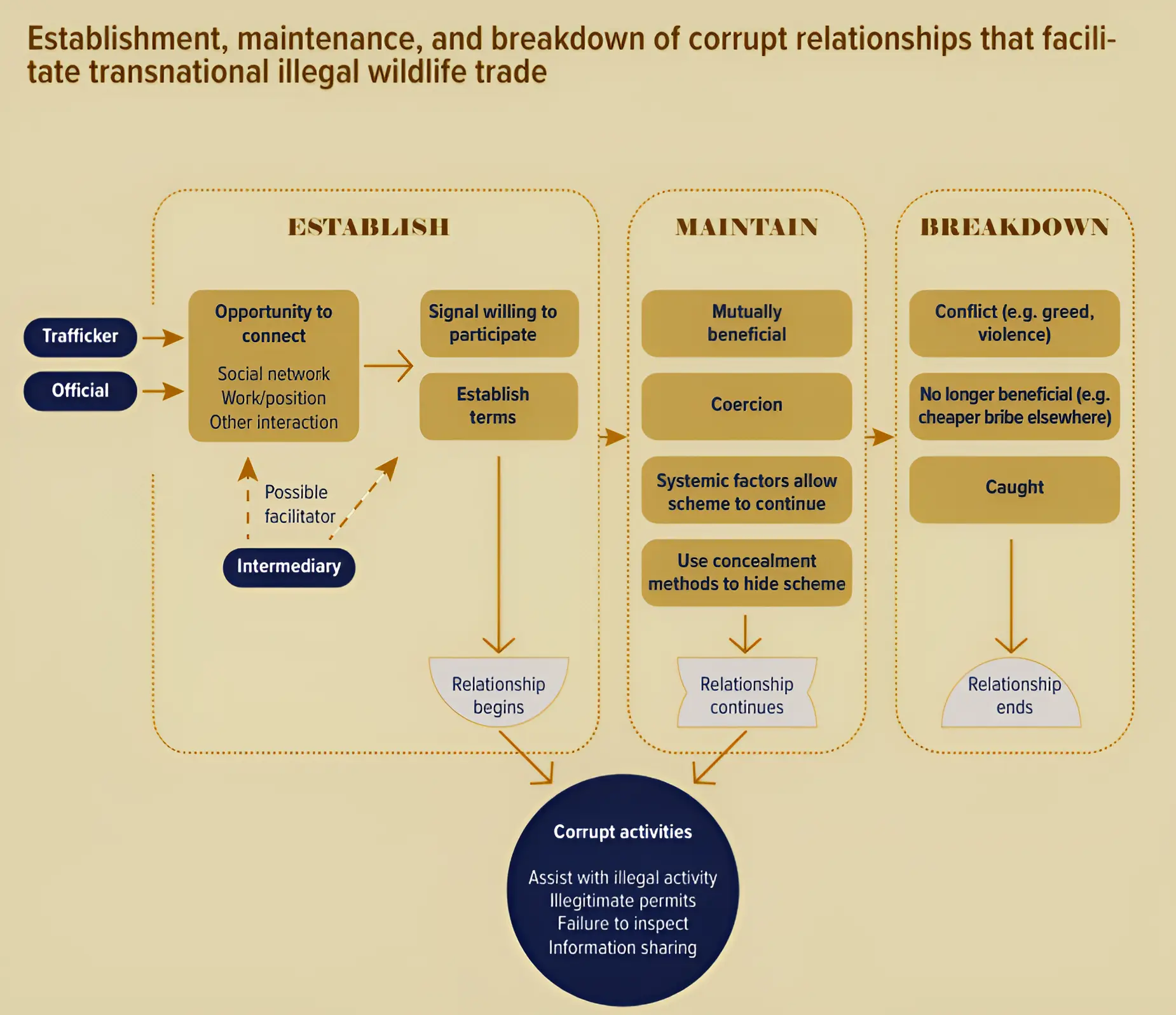 Criminal justice responses should be modernised, strengthened and harmonised from source to end markets.
Criminal justice responses should be modernised, strengthened and harmonised from source to end markets.- Strategic Interventions: With thousands of wildlife species affected and a diverse range of distinct markets driving multiple environmental and societal harms, interventions to reduce wildlife trafficking needed to be prioritised and more strategic.
- Addressing Organised Crime as a Whole: It is required in order to tackle wildlife crime.
- Check on Corruption & Technology: The World Wildlife Crime Report, 2024 also flagged corruption and technology as areas that should be looked into.
- There is a need to promote the greater utilization of specialized investigative techniques, including communications interception, undercover operations, use of listening and tracking devices, controlled deliveries, etc.
- Intelligence Collection and Comprehensive Wildlife Datasets: There is a need for better intelligence collection methods and developing frameworks and protocols for secure and timely intelligence sharing.
- Synergy & Collaboration: Synergy among Indian Coast Guard and Forest/Police/Customs is crucial to counter marine wildlife smuggling.
- There is a need to urge strong coherence and harmonisation across the trade chain, strong international cooperation and increased investment to build data and analytical capacity at national and international levels in order to close knowledge gaps.
- Wildlife crime is interconnected and hence, requires a broader strategy to address organized crime as a whole.
- Addressing Wildlife Crime as Financial Crime: Establish coordination and cooperation between FIU-India, and Forest/Police/Customs/ for sharing financial intelligence related to wildlife trafficking.
- Use provisions of the Prevention of Money Laundering Act (PMLA) to investigate and curb wildlife crime as a financial crime.
Enroll now for UPSC Online Course
![]() 15 May 2024
15 May 2024
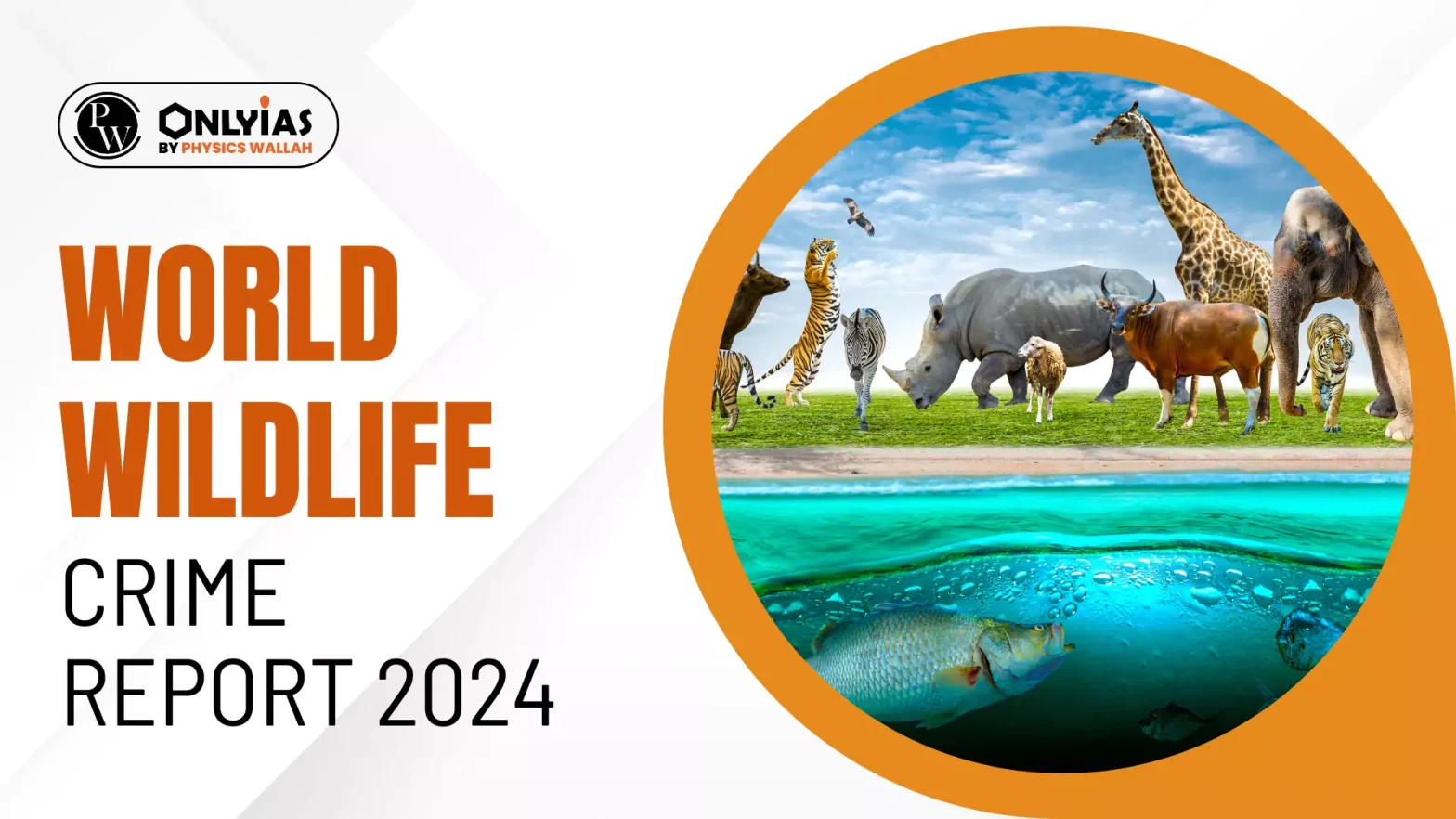

 Limited Financial Investigations: Many countries do not conduct financial investigations to identify the proceeds of crime or potential money laundering offenses linked to wildlife crime.
Limited Financial Investigations: Many countries do not conduct financial investigations to identify the proceeds of crime or potential money laundering offenses linked to wildlife crime.
 Factors Driving Wildlife Trafficking in India: Key among the drivers behind wildlife and plant trafficking were reasons such as food, medicine, animal collection, pet trade and making fashion products and adornments out of body parts.
Factors Driving Wildlife Trafficking in India: Key among the drivers behind wildlife and plant trafficking were reasons such as food, medicine, animal collection, pet trade and making fashion products and adornments out of body parts.  Criminal justice responses should be modernised, strengthened and harmonised from source to end markets.
Criminal justice responses should be modernised, strengthened and harmonised from source to end markets.